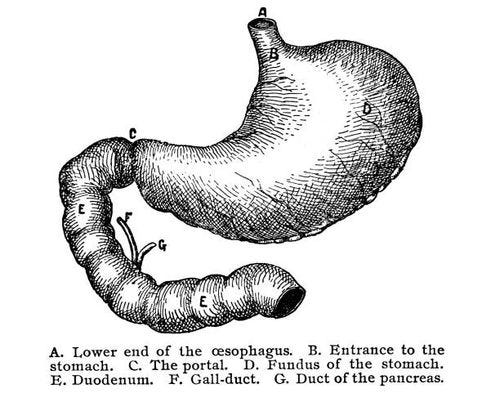CQRG Spring/2024 Medical Terminology Bootcamp
SESSION 12 / INTRODUCTION TO THE HUMAN DIGESTIVE SYSTEM
Welcome!
If you are new to our medical terminology program we invite you to browse our previous lessons and program activities. Simply click on the PROGRAMS tab above to view individual lessons and materials. Additional activities and reviews are posted on a weekly basis in the NOTES section. Each lesson in the program is a standalone experience, so there is never a worry if you need to take a break. Subscribe to receive the lessons emailed to you, or follow along in the Notes section.
Introduction to the Digestive System
digestive (adj).
meaning: of, or pertaining to digestion
The word "digestive" originated in the early 15th century and was initially used to describe something related to the process of digestion in the body.
Origins of the term relate to the Old French "digestif" and the Late Latin "digestivus," both of which are derived from the Latin word "digerere." This Latin word means "to separate, divide, arrange," and its literal translation is "to carry apart." It is formed by combining the prefix "dis-" meaning "apart" and the verb "gerere" meaning "to carry."
In earlier English usage, "digestive" was also used as a noun to refer to a preparation or medicine that aids digestion.
The gastrointestinal system consists of the gastrointestinal tract, also known as the GI tract or digestive tract, along with the liver, pancreas, and gallbladder.
This tract is a sequence of hollow organs interconnected in a lengthy, winding tube extending from the mouth to the anus. The hollow organs comprising the GI tract include the mouth, esophagus, stomach, small intestine, large intestine, and anus. On the other hand, the liver, pancreas, and gallbladder are the solid organs within the digestive system.
Key Functions Of The Digestive System
Every component in the gastrointestinal system plays a role in facilitating the movement of food and liquids along the digestive tract, breaking them down into smaller components, or performing both functions simultaneously. Food moves through the tract by a process called peristalsis.
Key term: peristalsis
involuntary muscle movement that occurs in the digestive system;
these wave-like muscle contractions move food through the digestive tract
Major Features of the Digestive System
Mouth
Epiglottis, a small flap of tissue, folds over the “windpipe” to prevent choking and allows food to pass into the esophagus.
Once swallowing begins, the process becomes automatic as the brain signals the muscles of the esophagus and peristalsis begins.
At the end of the esophagus, the lower esophageal sphincter relaxes to allow food to enter the stomach.
This sphincter typically remains closed to prevent stomach contents from flowing back into the esophagus.
In the stomach, food and liquid are mixed with digestive juices by the stomach muscles.
The stomach then gradually empties its contents, known as chyme, into the small intestine.
Within the small intestine, food is mixed with digestive juices from the pancreas, liver, and intestine.
This mixture is moved along for further digestion, and the walls of the small intestine absorb water and nutrients into the bloodstream.
Waste products move into the large intestine as peristalsis continues.
The large intestine absorbs water and transforms waste into stool, including undigested food parts, fluid, and older cells from the GI tract lining.
Peristalsis aids in moving the stool into the rectum.
These features along with hormones and nerves collaborate to regulate the digestive process. Signals move freely back and forth between the gastrointestinal tract and the brain. The body will use the sugars, amino acids, fatty acids, and glycerol it receives to build substances needed for energy, growth, and cell repair.
Helpful Video:
Recommended Reading (Optional)
Textbook
Medical Terminology for Healthcare Professions, Katherine Greene and Andrea Nelson





